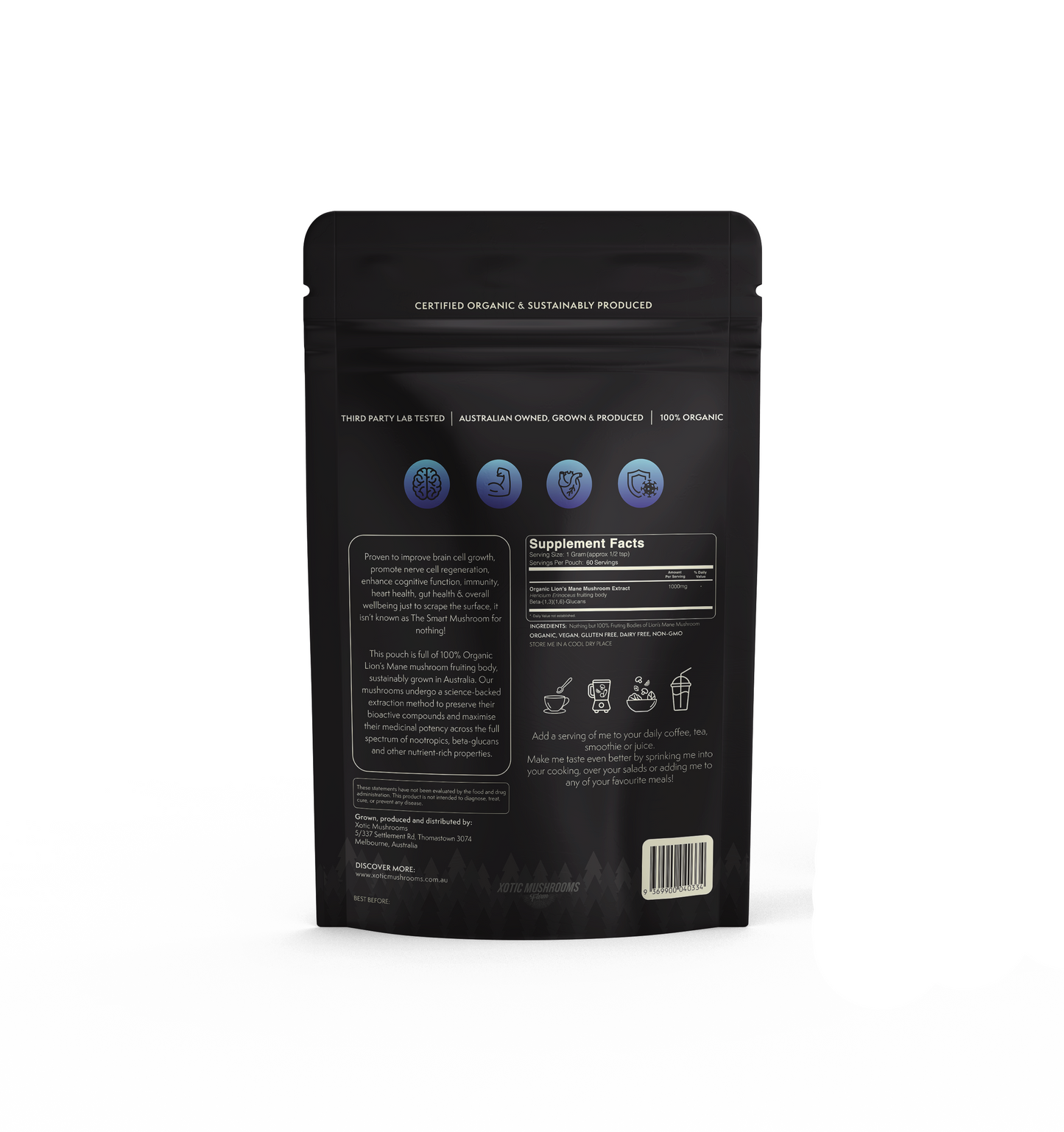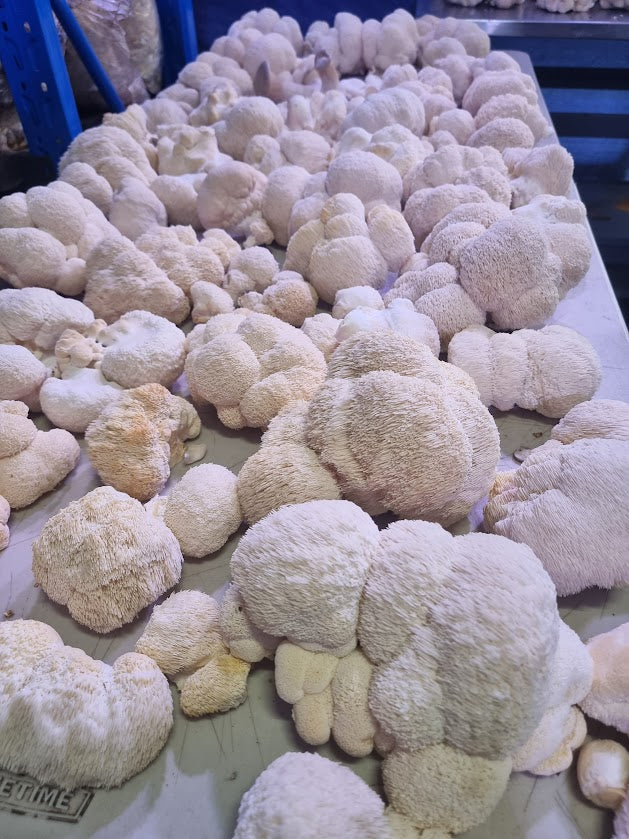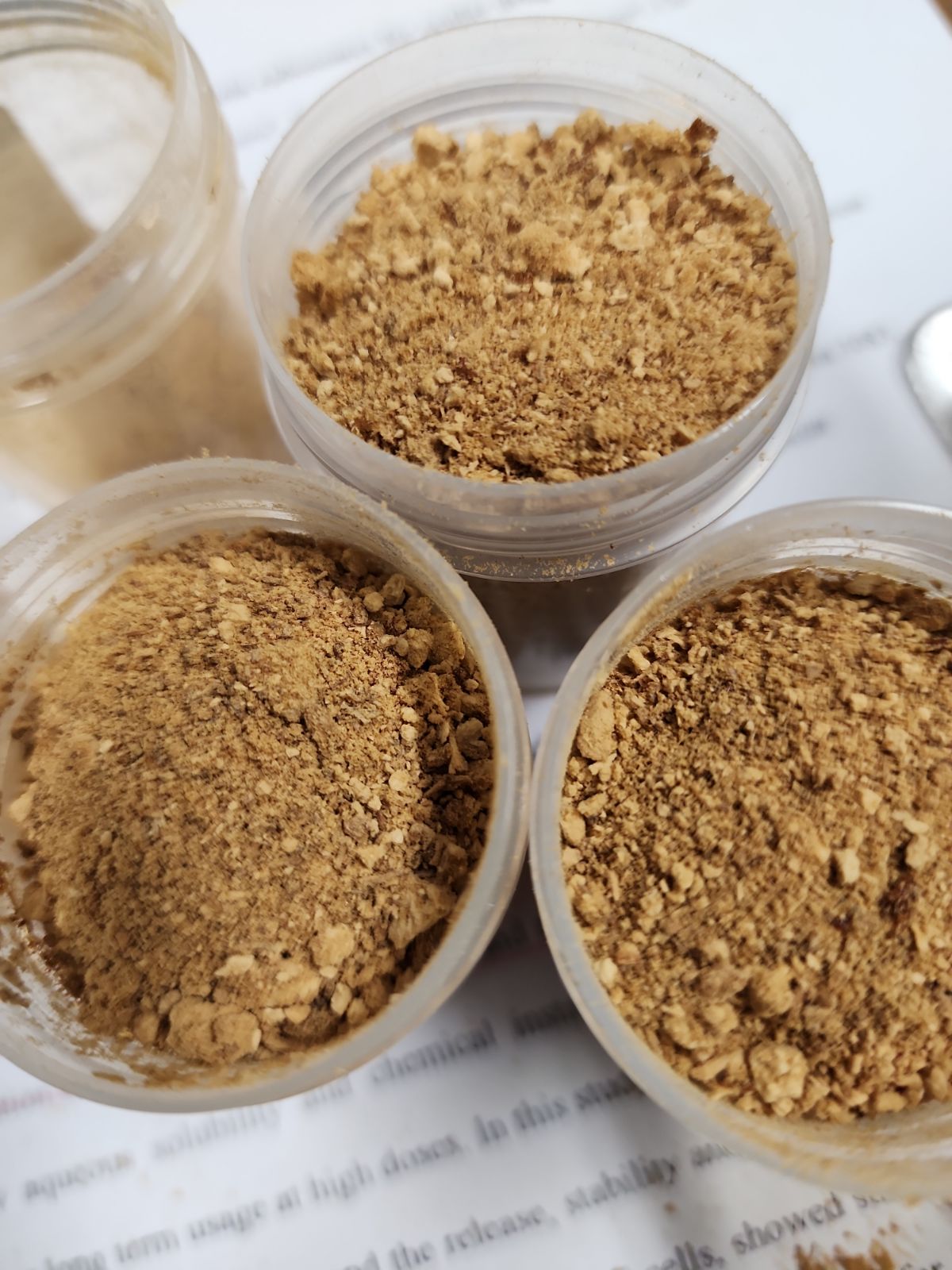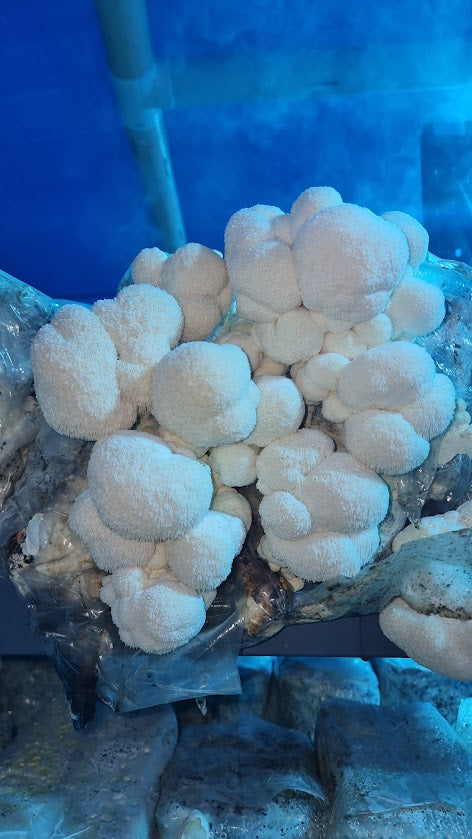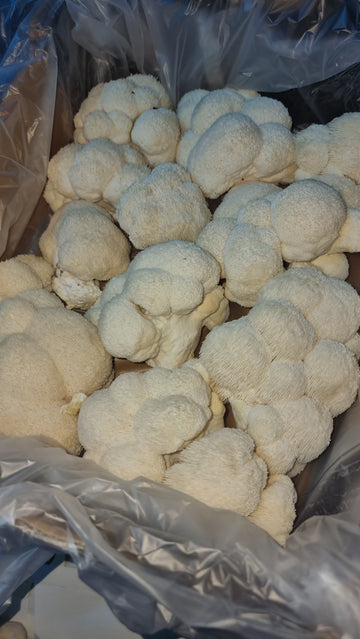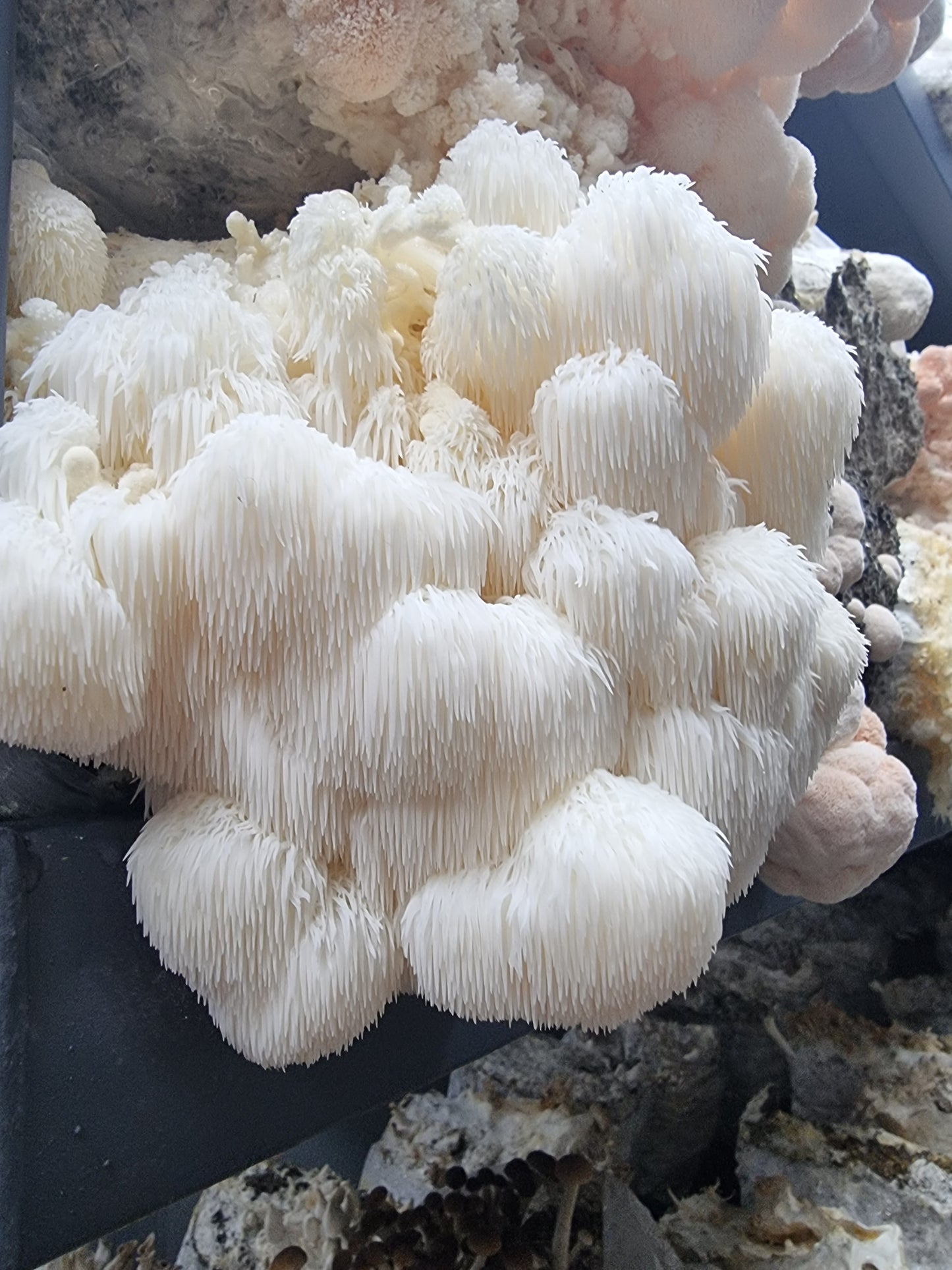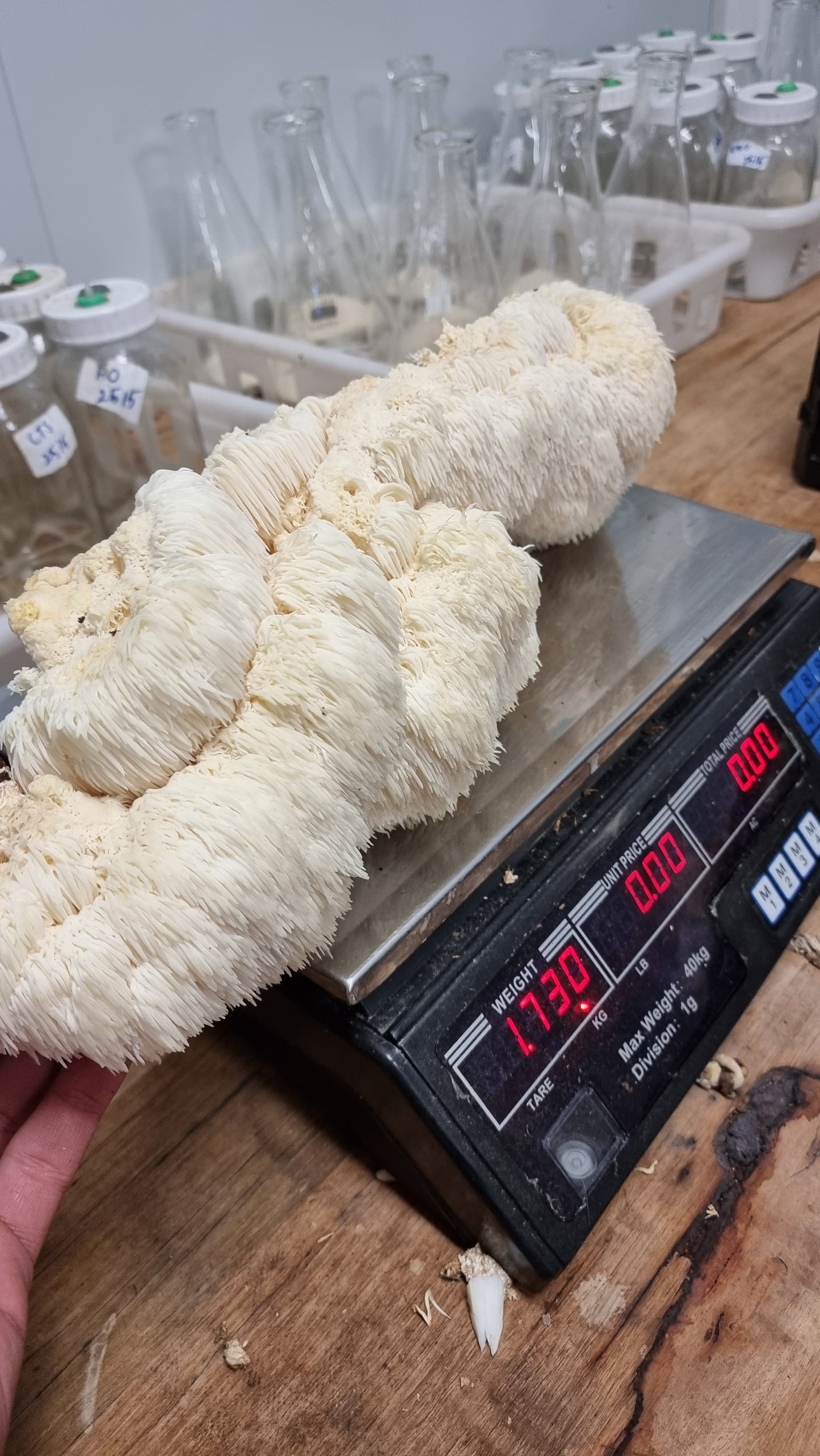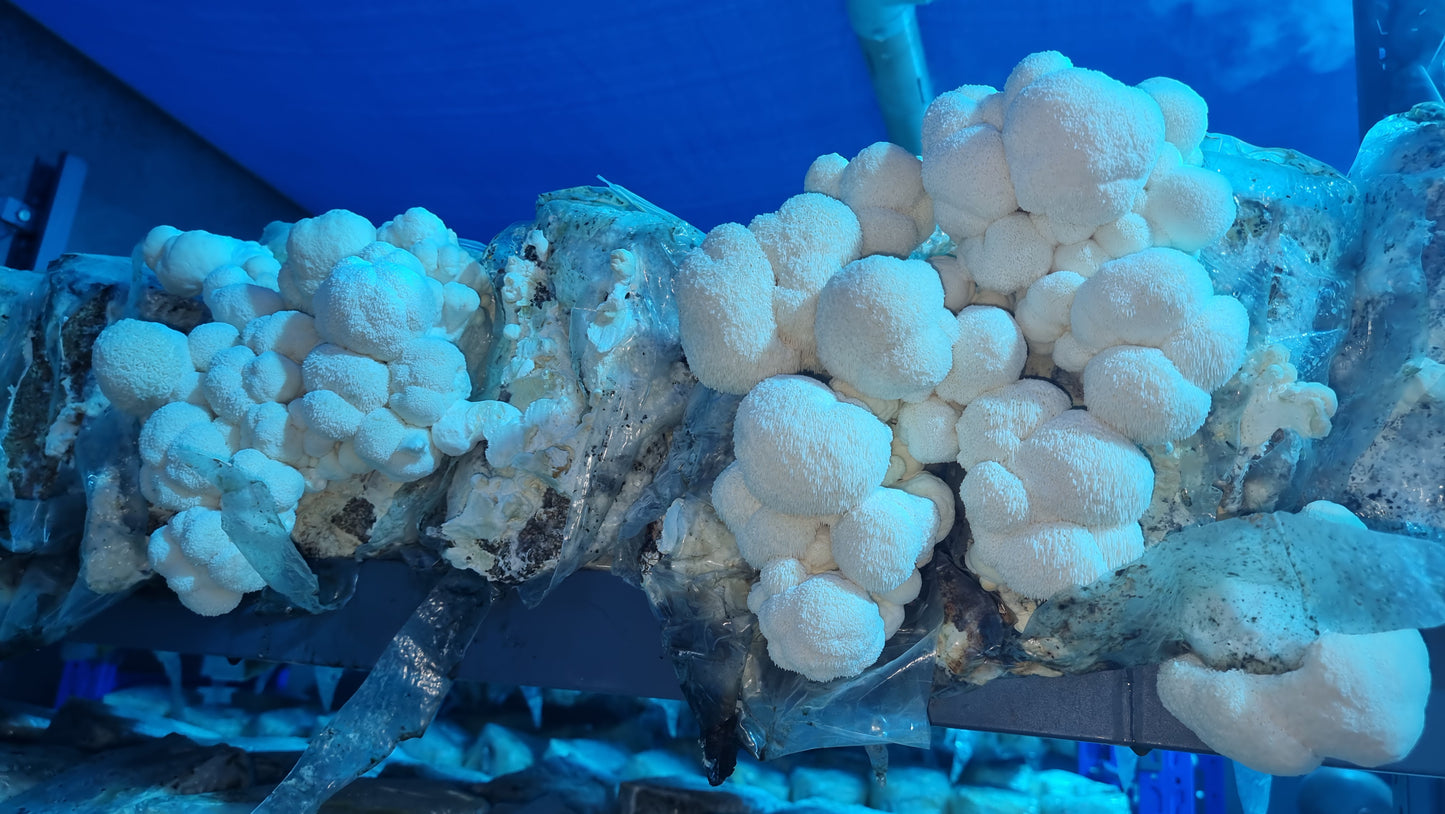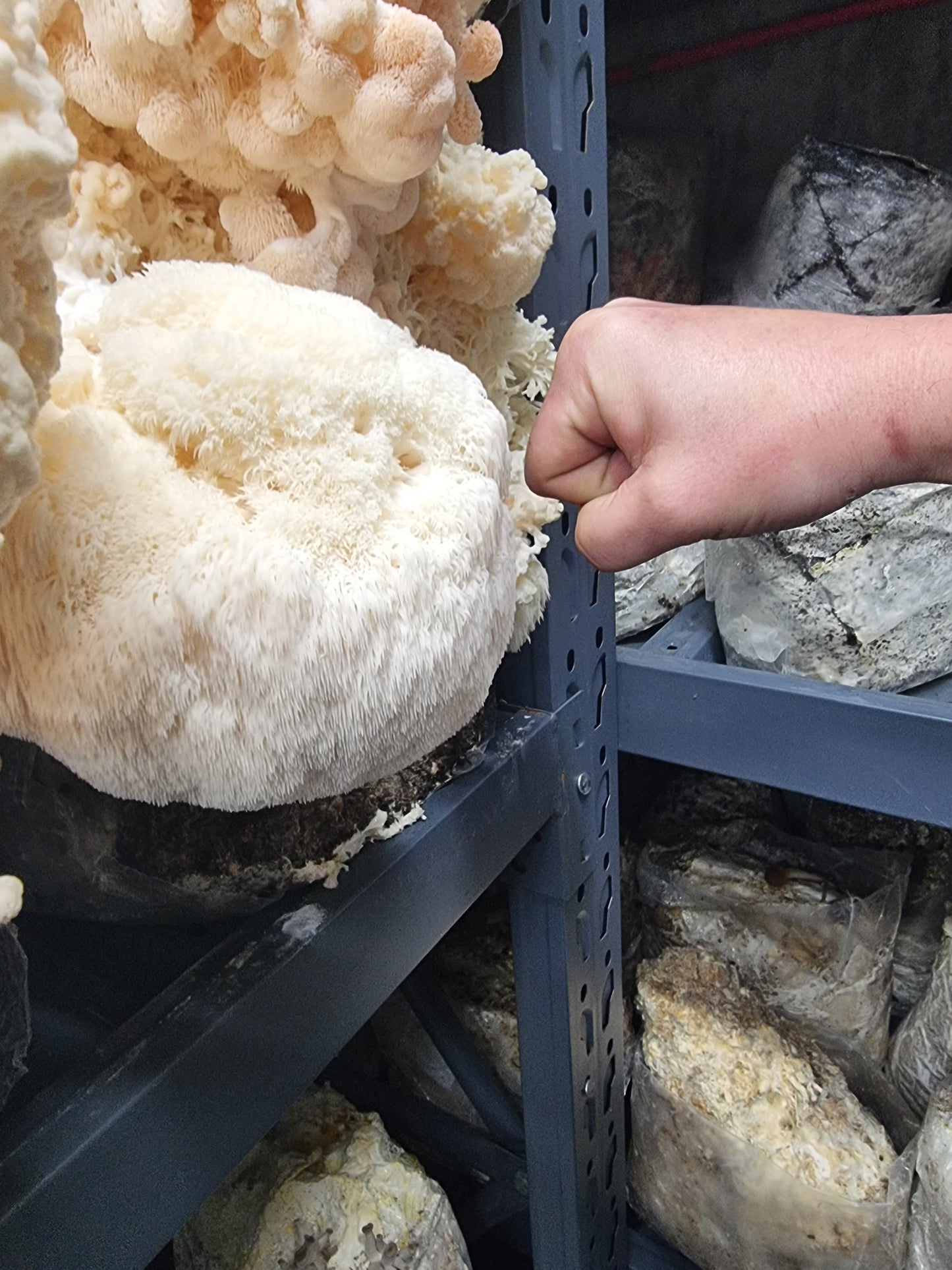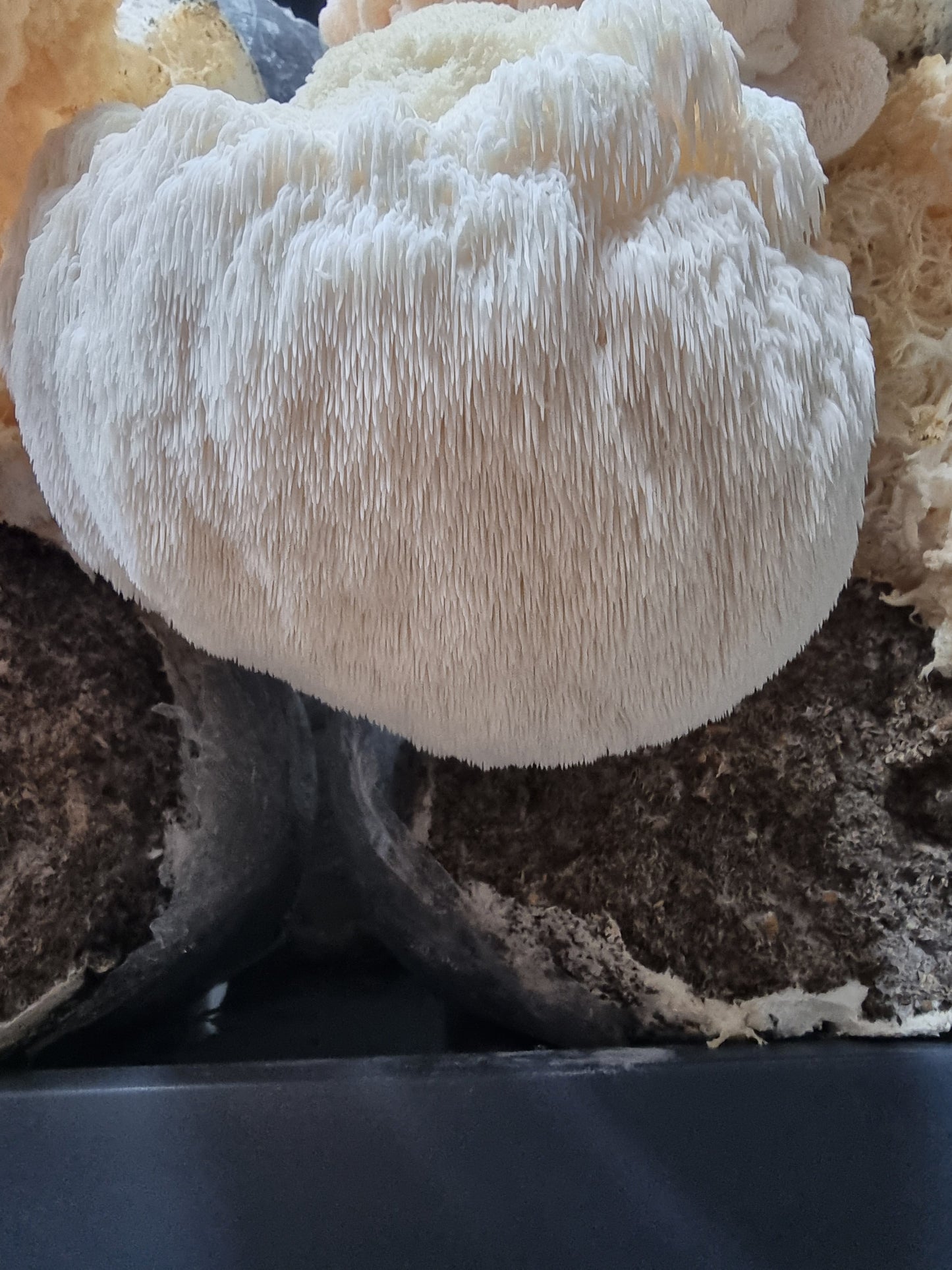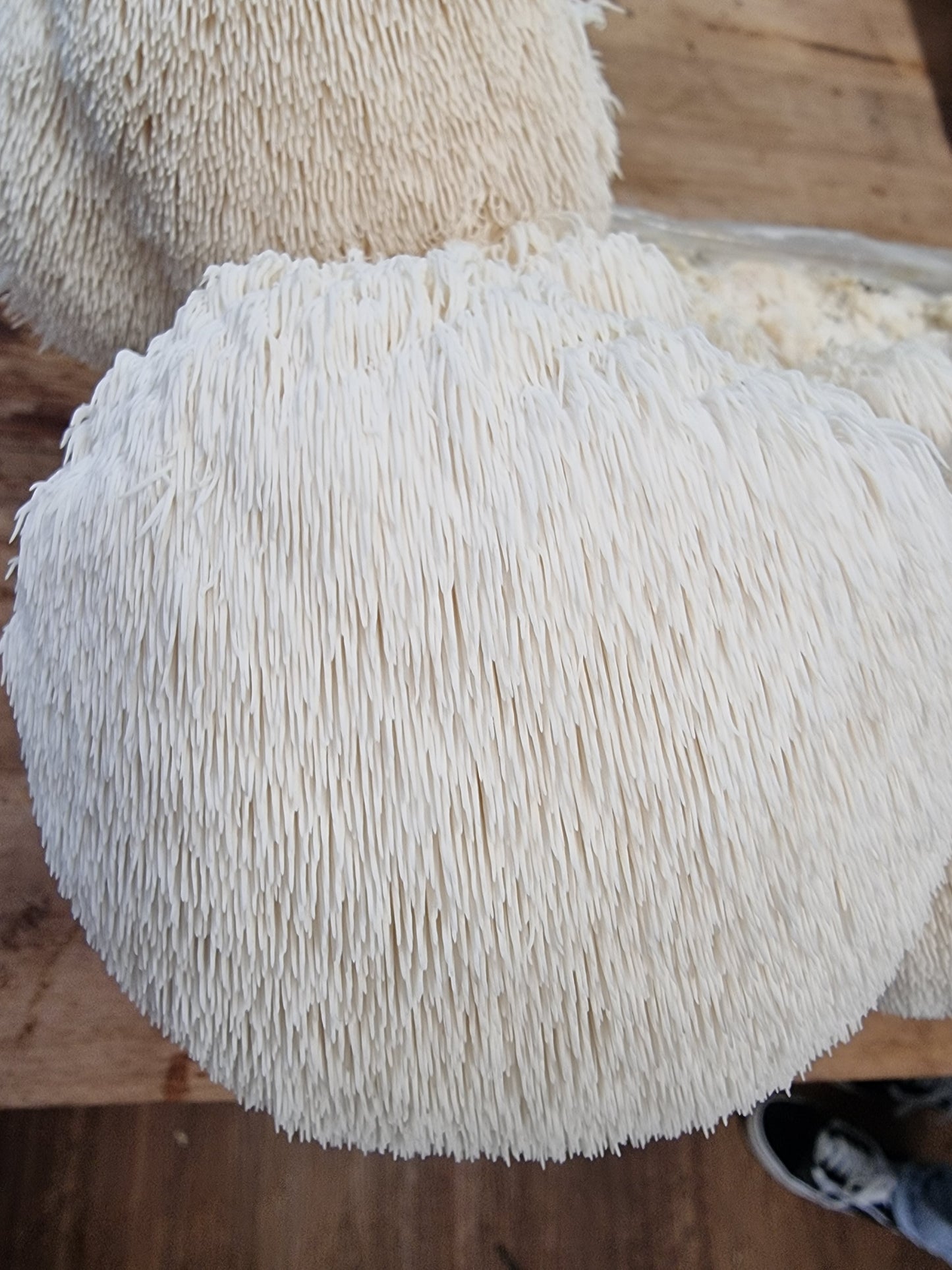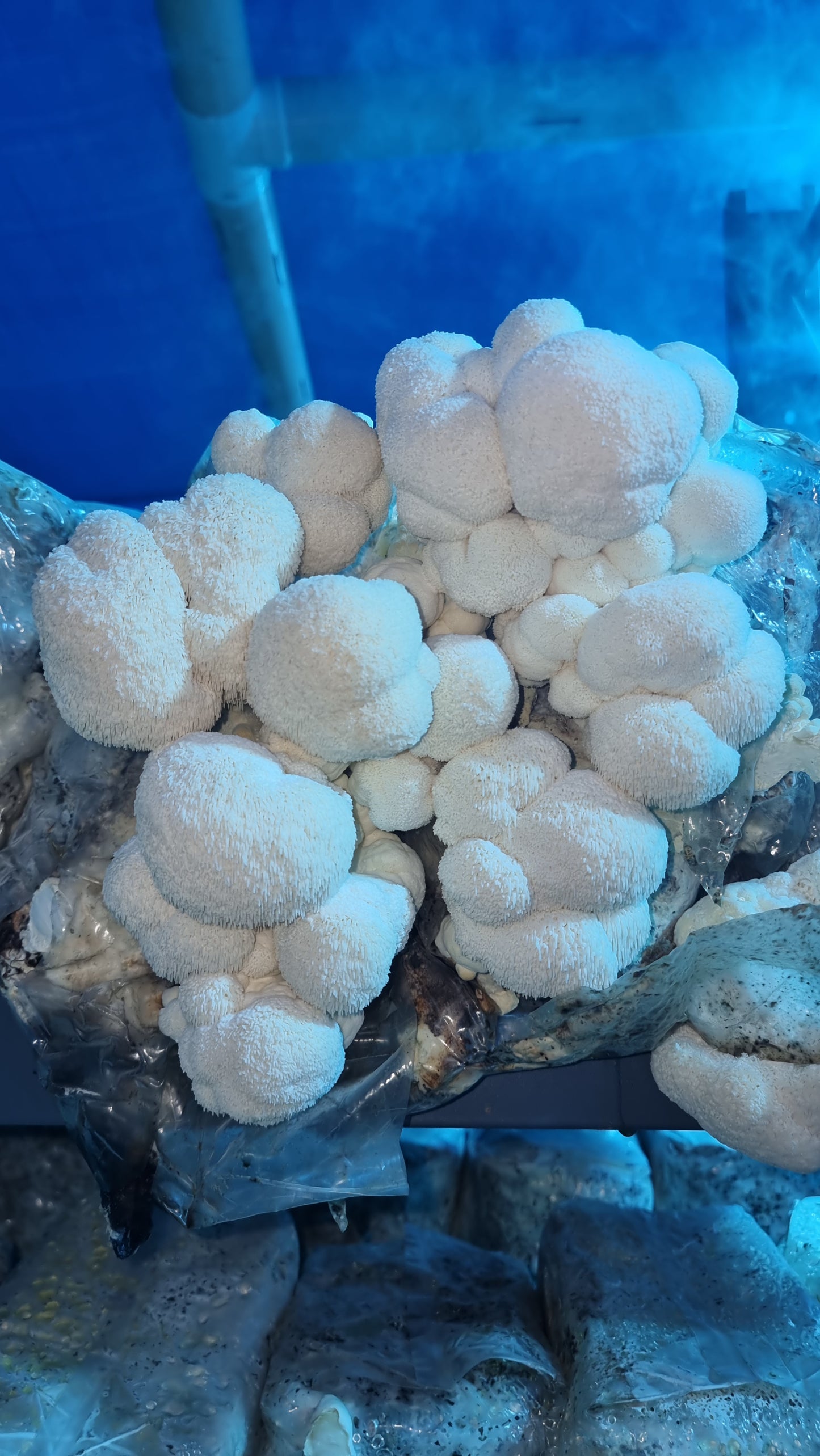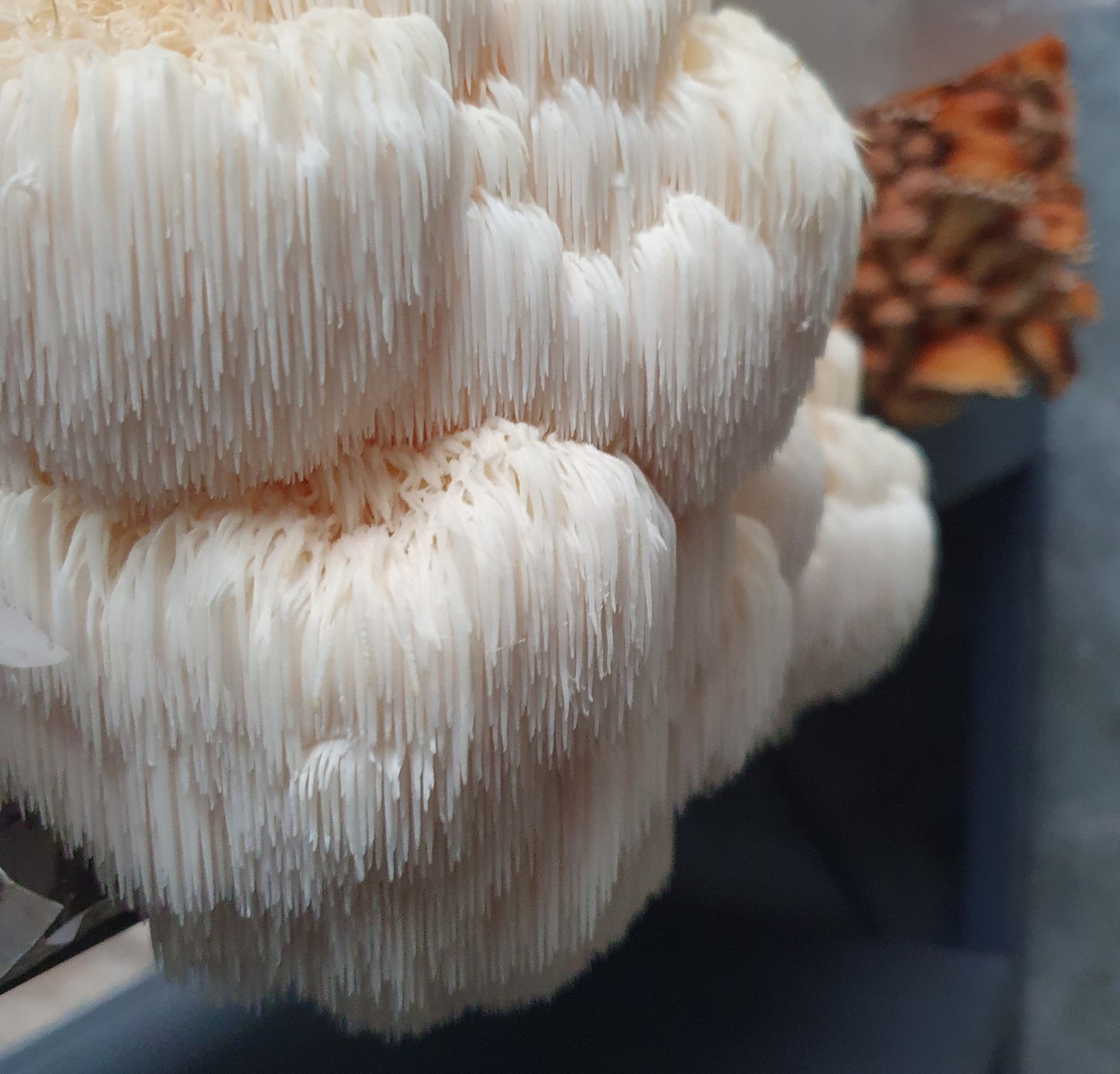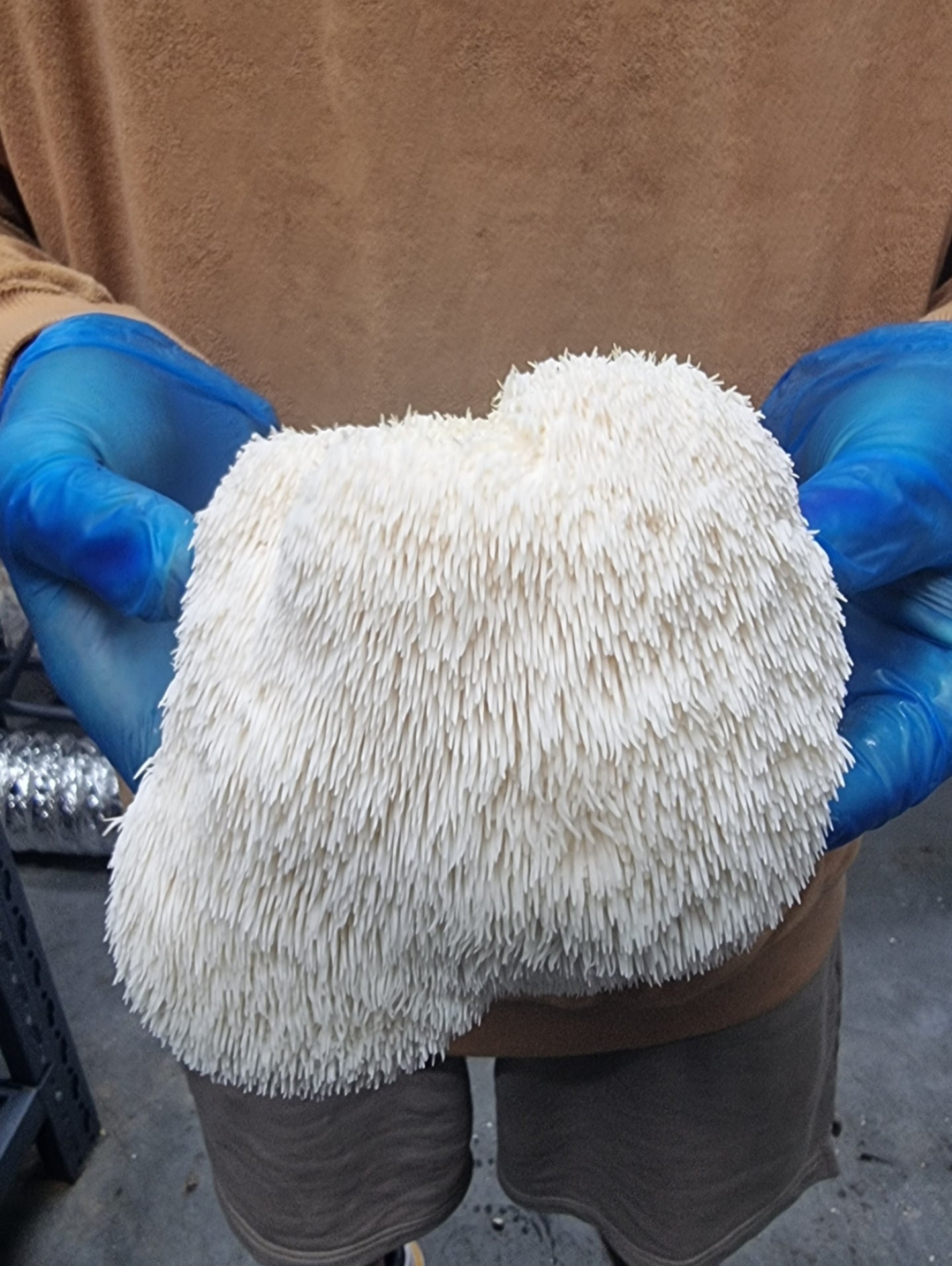Having trouble growing mushrooms in your garden or backyard?
Growing mushrooms can seem daunting, especially when faced with complex methods and inconsistent results. You might avoid becoming frustrated and yielding poor harvests with clear guidance.
Our ultimate guide to growing mushrooms on logs simplifies the process, offering straightforward, step-by-step instructions. Master this technique to enjoy a bountiful, home-grown mushroom harvest with ease.
Choosing the Right Mushroom Varieties

When choosing a mushroom species, consider your local climate, the type of wood available, and your taste preferences. Ensure the chosen mushrooms match the environmental conditions of your growing area to optimise growth and yield.
Selecting suitable mushroom varieties for log cultivation is crucial for a successful harvest. Shiitake, Oyster, and Lion’s Mane are among the best choices for growing on logs, offering distinct benefits and requirements.
- Shiitake mushrooms: are highly valued for their rich flavour and medicinal properties. They thrive in hardwood logs, such as oak and maple, and are known for their high yield and long fruiting period.
- Oyster mushrooms: are versatile and can grow on various hardwoods and softwoods. They produce quickly and are known for their delicate texture and mild taste.
- Lion’s Mane: is another excellent option, prized for its unique appearance and cognitive health benefits. It prefers a more relaxed environment and works well with hardwood logs.
Selecting and Preparing Logs

Choosing and preparing the proper logs is fundamental to successful mushroom cultivation. Fresh, healthy logs from hardwood trees like oak, maple, or beech are ideal, providing the nutrients needed for mushrooms to thrive. Aim for logs that are 3 to 8 inches in diameter and between 3 to 4 feet in length.
Opt for logs cut within the past 6 to 12 months, as older or dried logs may be less effective. To prevent contamination, ensure the logs are free from diseases, pests, or rot.
Cut the logs to the appropriate size and remove any bark or debris. Drill holes about 1.5 inches deep and 0.5 inches in diameter, spaced 4 to 6 inches apart along the log's length. These holes will be inoculated with mushroom spawn.
Sterilising the logs before inoculation can further reduce contamination risks. Soaking the logs in water for 24 hours or steaming them helps eliminate unwanted microorganisms. Properly prepared logs provide a robust foundation for successful mushroom growth and maximise your yield.
Inoculating the Logs

Inoculating the logs is a crucial step in mushroom cultivation, where you introduce the mushroom spawn into the prepared logs to start the growing process. Choose the right spawn, which can be a plug or sawdust spawn, depending on your preference and the mushroom species.
Step-by-Step Process
Ready to cultivate your own gourmet mushrooms? Discover the ultimate step-by-step guide to growing mushrooms on logs and enjoy a bountiful harvest.
- Fill the Holes: Insert the spawn into the drilled holes on the logs. For plug spawn, simply tap the plugs into the holes. Use a spoon or a specialised tool to pack the sawdust into the holes firmly for sawdust spawn.
- Seal the Holes: To protect the spawn and reduce contamination risk, seal the inoculated holes with wax. Melt paraffin or cheese wax and brush it over the holes, ensuring that it covers the entire surface.
- Monitor Conditions: Place the inoculated logs in a shaded, humid environment, such as a forested or shaded outdoor spot. Maintain moisture levels by regularly misting the logs or allowing them to absorb rainwater.
Maintaining the Log Environment

Once your logs are inoculated, proper maintenance is crucial for a successful mushroom harvest. Start by placing the logs in a shaded, well-ventilated area, ideally under a canopy of trees or a shaded structure. Ensure the logs remain moist but not waterlogged, as mushrooms thrive in humid conditions.
Regularly check the logs for signs of dryness or mould. If the logs begin to dry out, mist them lightly or soak them in water for a few hours. Protecting the logs from extreme temperatures and direct sunlight, which can hinder mycelium growth, is essential. Cover the logs with breathable fabric or burlap during dry spells to maintain humidity levels.
Additionally, look for pests and diseases, such as ants or fungal contaminants, and address these issues promptly to prevent damage. Regular monitoring and maintaining optimal environmental conditions will ensure your mushroom logs remain healthy and productive, leading to a successful and bountiful harvest.
Caring for Your Mushroom Logs

Effective care for your mushroom logs ensures a thriving crop and maximises yield. Start by regularly inspecting your logs for signs of contamination or pests. Healthy logs will show consistent white mycelium growth. If you notice any unusual colours or textures, such as green or black mould, remove the affected areas immediately to prevent spreading.
Maintain proper moisture levels; logs should be damp but not soggy. Water the logs gently during dry periods to keep them hydrated. Use a soaker hose or a gentle mist to avoid disturbing the mycelium. It's also crucial to provide adequate ventilation to prevent excess humidity and potential mould growth.
Provide cover during heavy rain or intense heat to protect the logs from extreme weather conditions. In winter, insulate the logs with straw or mulch to shield them from freezing temperatures. Regularly turn the logs to ensure even exposure and stimulate mushroom production.
Harvesting Mushrooms

Knowing when and how to harvest mushrooms is crucial for maximum yield and quality. Most log-grown mushrooms are ready for harvest when the caps have fully expanded and are starting to flatten.
For Shiitake mushrooms, this typically occurs when the caps have turned a rich brown and are no longer curled under. Oyster mushrooms should be picked when the edges of the caps start to curl upwards, indicating they are mature but not yet past their prime.
Use a sharp knife or scissors to cut the mushrooms at the base of the stem to prevent damaging the mycelium and ensure future fruiting. Avoid pulling mushrooms off, as this can disrupt the log’s colonisation.
After harvesting, inspect the logs for any signs of contamination or pests and take appropriate action if needed. Regular harvesting encourages continued production, so monitor your logs frequently and pick mushrooms at their peak for the best flavour and texture.
Extending the Life of Your Logs
Maximising the lifespan of your mushroom logs is crucial for ongoing harvests. Start by ensuring the logs are properly maintained; keep them in a shaded, moist environment to prevent drying out and fungal contamination.
Check for signs of disease or pests regularly and treat any issues promptly. To further extend their life, consider re-inoculating logs with fresh mushroom spawn every 2-3 years, especially if fruiting declines.
Additionally, rotate logs periodically to ensure even moisture distribution and prevent any single log from becoming overburdened. By following these practices, you can enhance the productivity and longevity of your mushroom cultivation.
Frequently Asked Questions (FAQs)
Growing mushrooms on logs can spark a range of questions. Here, we address some of the most common queries to help you succeed in your mushroom cultivation journey.
1. How long does it take for mushrooms to start fruiting?
Depending on the mushroom variety, fruiting can start six months to 1 year after vaccination. Factors like temperature and humidity affect the timing.
2. Can I use any type of wood for mushroom logs?
Not all wood types are suitable. Hardwoods such as oak, maple, and birch are ideal, while softwoods like pine are less effective due to their resin content.
3. How often should I water my mushroom logs?
Logs should be kept moist but not waterlogged. Watering once a week or when the logs feel dry is typically sufficient.
4. What should I do if my mushrooms are not fruiting?
Check for proper environmental conditions, such as moisture and temperature. Ensure logs are adequately inoculated and consider re-inoculating if needed.
5. How can I tell if my logs are contaminated?
Look for unusual colours, foul smells, or excessive mould growth. Contaminated logs should be removed to prevent spreading.
Conclusion
Growing mushrooms on logs offers a rewarding and sustainable way to cultivate fresh fungi. With careful selection, preparation, and injection, you can enjoy a bountiful harvest of delicious mushrooms from your backyard.
Ready to start your mushroom-growing journey? Follow this guide and transform your logs into a thriving mushroom farm today!




